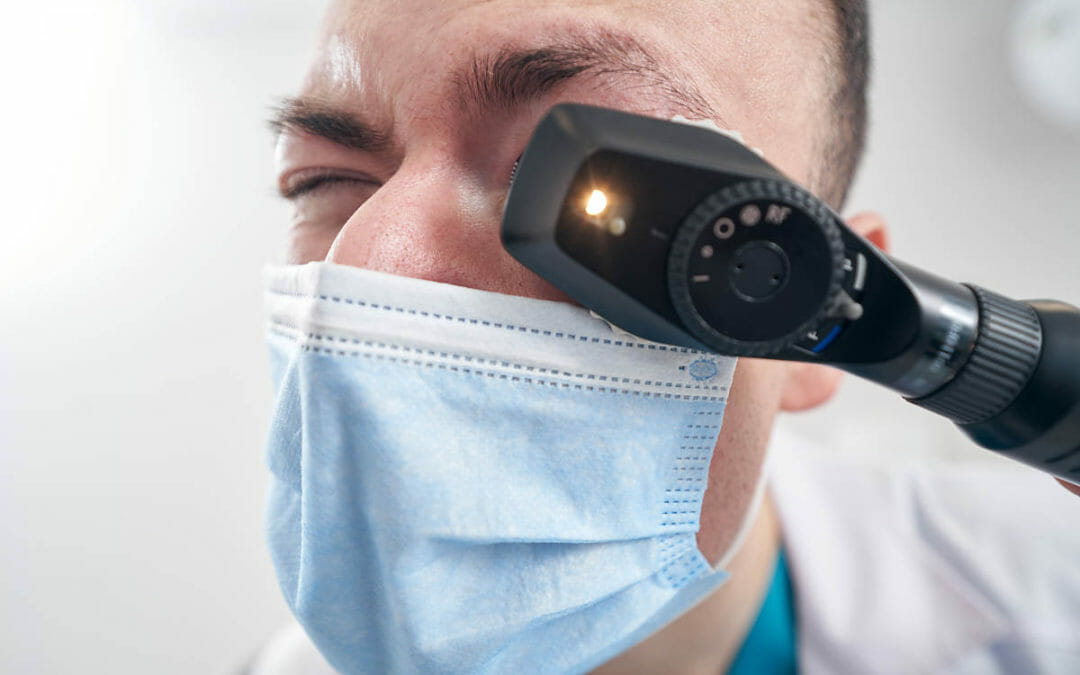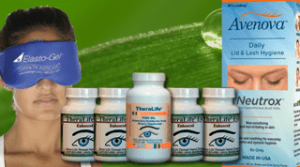Stop Your watery eyes( eye weeping) With TheraLife Now
Treat dry eyes to stop tear over production -eye weeping.
A major cause of weeping eye is chronic dry eyes – due to dry eyes left untreated for a long time. Your body starts to help you provide moisture by crying. Unfortunately the crying year ( Reflux Tear) is of poor quality making your eyes even drier. To stop this weeping eye – we must treat the root cause dry eyes first. Then your weeping eye will stop watering.
Clinically Proven, Doctors Recommended. Money Back Guaranteed
Call and talk to a doctor toll free 1-877-917-1989 US/Canada; Send inquiries to: [email protected]
How does the TheraLife Protocol Work?
- The discounted starter kit consists of:
TheraLife Eye Capsules – to restore normal tear function from inside out. No more drops - Omega 3 fish oil – to reduce inflammation and thicken tears for comfort
- Hot Compress – to melt the oil gland clogging which happens with 80% of the people with watery dry eyes. Massage to get the debri out.
- Eyelid cleansing – provide eyelid hygiene critical for recovery, and prevent bacterial rebound to the eyelids.
How soon will it work?
You should see improvement within 1 months. It takes 3 month to stop eye weeping. Since there is no cure for dry eyes, taking a maintenance dosage after recovery will ensure it does not recur. Call and consult with a doctor.
Customer Story
Watery dry eyes – relief by TheraLife Eye
“I have had dry eyes for many years and tried all kinds eye drops and treatments from my ophthalmologist with no results. Last year, I was told I needed eye glasses because my eyes watered so much I could not read the vision chart. This year, I went for my eye test and I was told my eyes were so much better. I don’t need eye glasses. I have been taking TheraLife for only 2 months, and started to have some relief after the first two weeks. TheraLife is the only solution that helped. .I continue to take TheraLife Eye to keep watery eyes at bay.”
S R. United States
Introduction- eye weeping
When you produce too many tears, they overwhelm your tear ducts, and you develop watery eyes – which is also called eye weeping. Watery eyes are often symptoms of a variety of health issues. Those who weep for a long period of time may have to see your medical doctor if they do not find a cure for this problem.
Eye weeping is the body’s natural response, the eyes start to produce more tears to get rid of the irritation. Eye irritation is a fairly common symptom that is often temporary and harmless.
Watery eyes can often cause eye infections, especially in older people.
Eyes are protected from toxins through a series tears.
Certain emotions, like sadness, joy or irritation, will make your eyes water.
Spending too much time on your laptop can even cause tears.
Our eyes can cause tears if something enters our eyes, including dirt or dust – this is normal.
All tears come out of tear glands, or lacrimal glands, found way up under your upper eyelids.
Tears wash down from the glands and over your eyes.
Some of the tears drain out of your eyes through tear ducts.
These ducts are tiny tubes that run between your eyes and your nose. When the tears fill up, they drain out.
What causes watery eyes- eye weeping?
Watery eyes (eye weeping) can be due to many factors and conditions.
Infants – eye weeping
In infants, persistent watery eyes, often with some matter, are commonly the result of blocked tear ducts.
Babies often have watering eyes because their tear ducts are small. It usually gets better by the time they’re 1 year old.
Overproduction of tears- eye weeping
One cause of excessive tearing is the eye producing too many tears.
This can happen when there is inflammation or irritation of the eye, such as with allergies or eye infections.
The excess tears are the body’s way of trying to wash away what is bothering the eye.
Blocked Tear Duct- eye weeping
Another possible cause of excessive tearing is a blocked tear duct, causing tears to collect in the eye.
The job of the tear duct is to carry away the tears.
If it is blocked, the tears will not drain normally into the nose.
Allergy- eye weeping
Sometimes watering eyes can be caused by an allergy blocked tear ducts (the small tubes that tears drain into).
Dry eye syndrome – eye weeping
With dry eyes, people have trouble making tears because their tear glands don’t produce enough tears.
Dry eyes can get irritating and uncomfortable.
As the body’s natural response, the eyes start to produce more tears to get rid of the irritation.
But it can get too much for the eyes’ natural drainage to handle, thus causing the tears to overflow.
Dry eyes also result in blurred vision is a disturbance in a person’s eyesight that makes it difficult to see.
The meibomian oil gland on the eyelids stops working and produces a fluid that prevents moisture from being evaporated.
The tear gland produces excessive amounts of water that causes your eye to over compensate.
Pink Eye- eye weeping
Conjunctivitis or eye infection.
if you have an eye infection, use a warm, wet towel placed on your eyes several times a day, which can help with blocked tear ducts a surgical procedure to clear blocked tear ducts.
Eyelid problems- eye weeping
Eyelid problems, such as eyelid inflammation (blepharitis) or an eyelid that is turned in or out.
The eyelids and lashes can curve inward and rub against the eye, a problem called entropion.
Or they sag outward, called ectropion , so the lids can’t wipe the whole eye when you blink.
Either one can trigger watery eyes.
If you need it, surgery can be a permanent fix.
An ingrown eyelash may grow in the wrong direction, toward the eye. This is called trichiasis.
The eyelid folds inward, causing irritation, discharge, crusting, and swelling, among other symptoms.
Clogged tear glands- eye weeping
Normally, tears flow out of the tear glands above your eye, spread across the surface of your eyeball, and drain into ducts in the corner.
But if the ducts get clogged, the tears build up and your eye gets watery.
Clogged oil glands- eye weeping
Problems With Oil Glands -Tiny glands on the edge of your eyelid, called meibomian glands , make oils that help keep your eyes healthy.
They stop your eyes from drying up too fast and create a barrier that keeps tears where you need them.
But if these glands get blocked and don’t make enough oil, your eyes get dry.
Placing warm compresses over your closed eyes for a few minutes
If the excessive tearing does not stop, or if the eyes become more irritated, make an appointment with your ophthalmologist.
Allergies- eye weeping
Sometimes watering eyes can be caused by an allergy blocked tear ducts (the small tubes that tears drain into).
Allergy medicines, eye drops, and avoiding your triggers — like pollen, mold, or pet dander — can help. While colds
Stye- eye weeping
Stye– a swollen, red, painful lump along the edge of your eyelid can be irritating.
Bacteria are the cause, and a stye will probably go away on its own in a few days.
In the meantime, leave it alone and don’t try to pop it like a pimple — you’ll spread the infection.
The weather – eye weeping
Weather situations like extreme temperatures can irritate your eyes or cause you to water. Eyes also have a high sensitiveness to light which makes them water easily in direct sunlight.
Environment-eye weeping
If your air-conditioned room is very hot for a while or your heating system is having a problem, you could be at risk for watery eyes.
Weather conditions such as dusty weather, wind, cold, and sunshine eye strain environmental factors such as bright light and smog will all cause watery eyes.
Straining your eyes- eye weeping
Seeing things in an unrelenting way may make your eyes watery and inevitably you’re likely to blink for an extra hydration effect.
Having a cold
If you have an infection, your eyes can run watery.
The tears canal may be inflamed and can be blocked by a viral infection.
While colds can cause watery eyes, they won’t make them itch.
That’s one way to tell colds and allergies apart.
Treatments for eye weeping
Remedies for watery eyes include:
- prescription eye drops treating allergies that make your eyes watery
- antibiotics if you have an eye infection a warm, wet towel placed on your eyes several times a day, which can help with blocked tear ducts
- A surgical procedure to clear blocked tear ducts surgery to repair or create a new tear drainage system (dacryocystorhinostomy)
When Should You See the Doctor for eye weeping?
Consult your doctor if you have a prolonged case of watery eyes, especially if it is accompanied by other symptoms.
Be prepared to answer questions about recent eye injuries and health conditions.
Tell your doctor about any prescription or over-the-counter medications or supplements you take.
Your doctor may also perform a test that determines if fluid can pass through the tear ducts.
Dry eyes are usually temporary but usually improve when the cause is treated.
Consult your eye doctor for any signs or symptoms.
Diagnostic tests for watery eyes can be helpful to determine what to do for a particular condition.
Frequently Asked Questions
What does it mean if one eye keeps watering?
If one eye keeps on watering, check to see if you have a foreign body in that eye. Try flushing with eye drops. Sometimes when that one eye is particularly dry, it will weep while the other eye does not. Check with your eye doctor.
How do you stop a weeping eye?
You can try to stop a weeping eye by taking anti-histamines if it is due to allergies. If not, use TheraLife Eye capsules, fish oil, not compress and eyelid cleanser to treat dry eyes.
What causes weeping eye?
Weeping eye can be caused by dry eyes, allergies, conjunctivitis, stye, chalazion and especially autoimmune diseases.
Why my eyes are watering so much?
Your eyes are watering a lot because you have not found the root cause of the problem. If you already have dry eyes, chances are your watering eyes are caused by chronic dry eyes. Consult with TheraLife for an all natural solution that works.
Conclusion
A watery eye is a common complaint among patients visiting the eye doctor. This condition affects all age groups due to different etiologies. It can negatively impact patients’ lives and be a manifestation of systemic disease. Due to its multifactorial nature, a comprehensive history and workup are essential to detect the possible causes of the watery eye. Failure to do that can result in unsuccessful treatment. This activity reviews the assessment and management of the watery eye. It also highlights the role of the healthcare team in managing patients with this condition.
References
Watery eyes. mayoclinic.org/symptoms/watery-eyes/basics/causes/sym-20050821 Tear system. (n.d.).
Health Conditions Discover Plan Connect Shop Subscribe Why Are My Eyes Watering?





